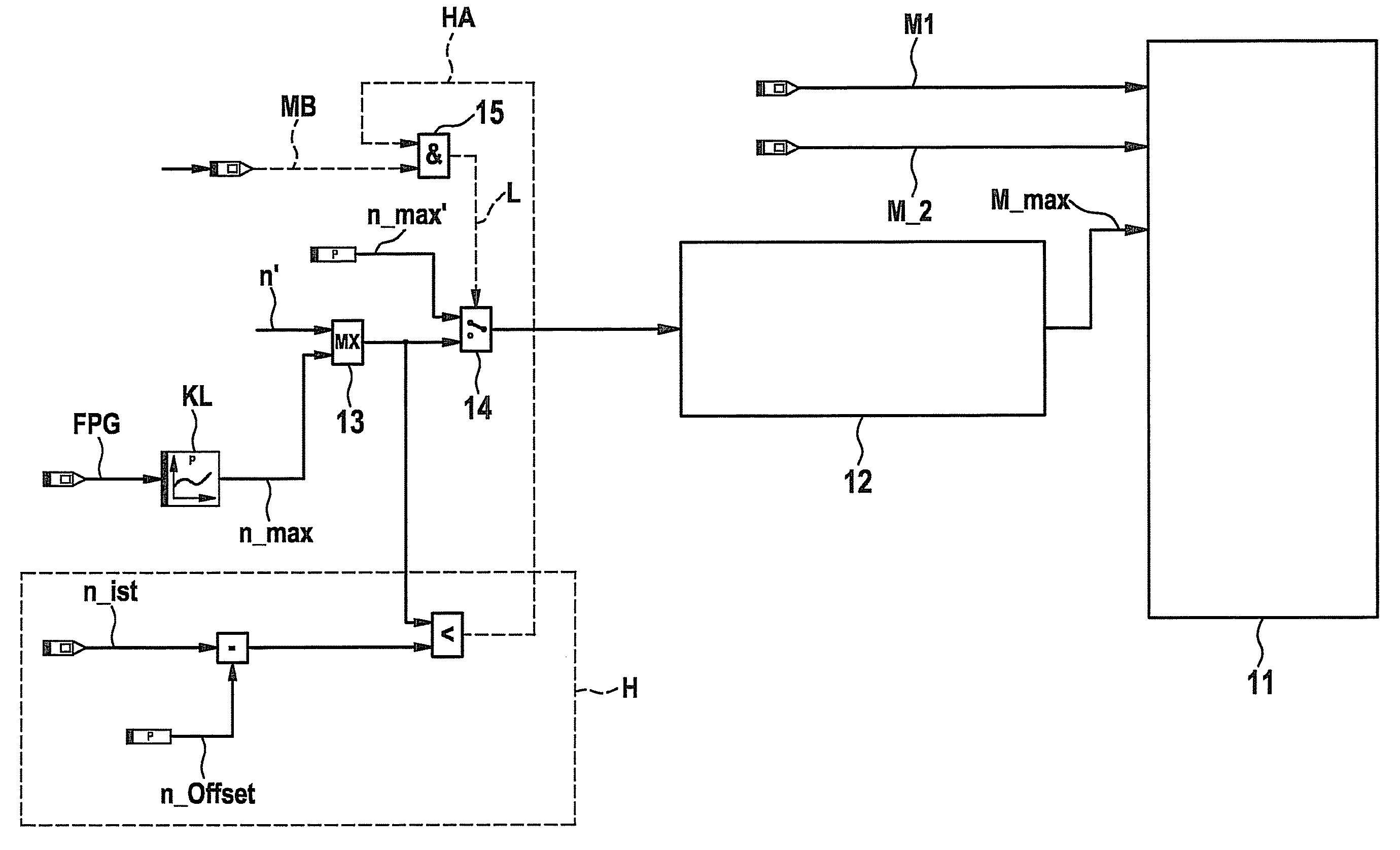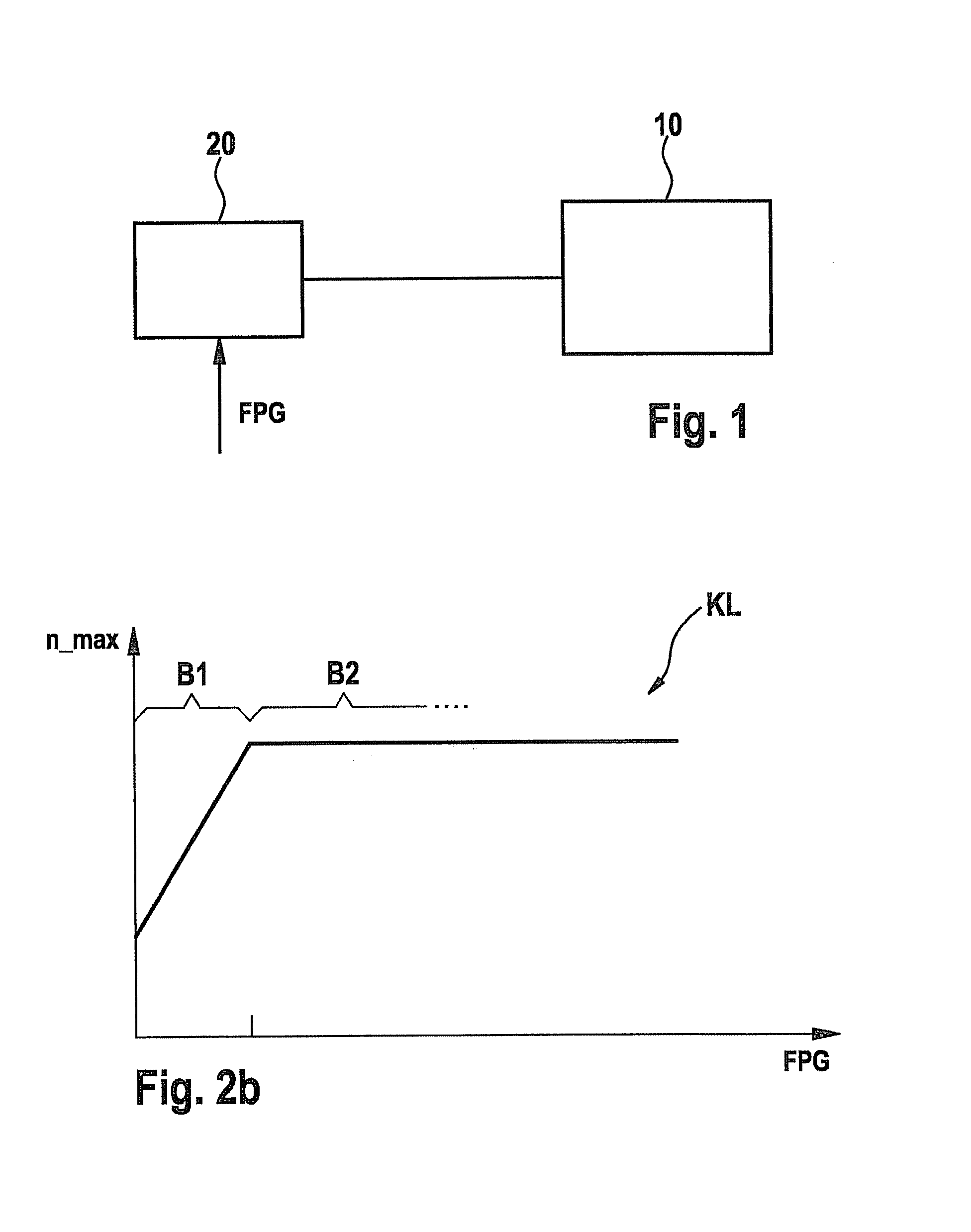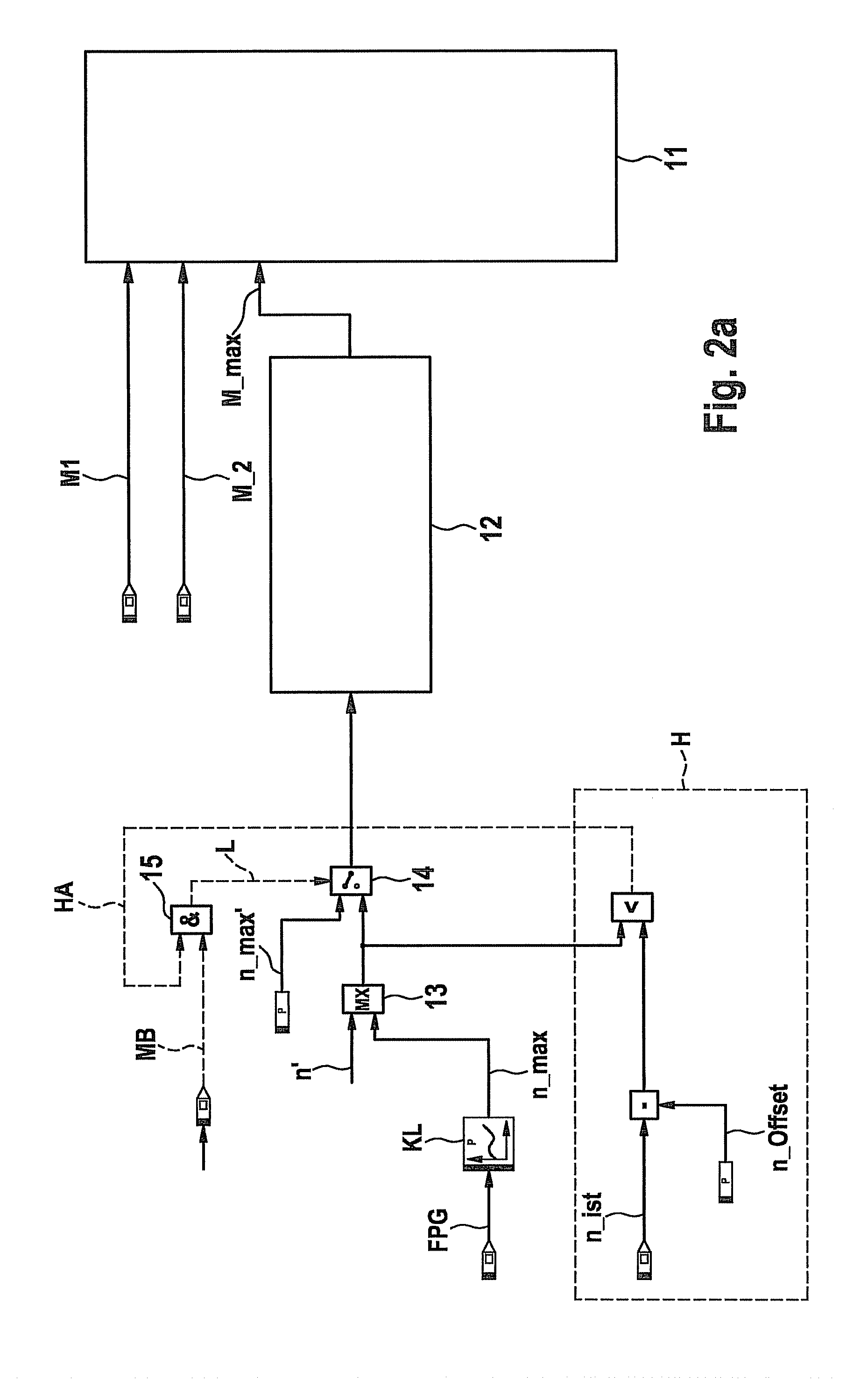Method for operating an internal combustion engine
a control device and internal combustion engine technology, applied in the direction of electric control, speed sensing governors, instruments, etc., can solve the problems of excessively high precontrolled torque, and unsatisfactory increase in torque output of internal combustion engines, so as to prevent an erroneous response of the torque monitor, reduce the needlessly high, pilot-controlled torque
- Summary
- Abstract
- Description
- Claims
- Application Information
AI Technical Summary
Benefits of technology
Problems solved by technology
Method used
Image
Examples
Embodiment Construction
[0022]FIG. 1 schematically illustrates an internal combustion engine 10 whose operation is controlled and / or regulated with the aid of an associated control device 20.
[0023]As can be seen from FIG. 1, a signal FPG of an accelerator sensor is forwarded to control device 20, the signal representing a torque desired by a driver of the motor vehicle in which internal combustion engine 10 is installed.
[0024]The example method according to the present invention provides a restriction of the setpoint torque to be output by internal combustion engine 10 to a specifiable torque, in particular in response to an error in the control of internal combustion engine 10, in order to prevent an undesired acceleration of internal combustion engine 10 as a result of torque-increasing errors in the control or control device 20.
[0025]FIG. 2a shows a flow chart for realizing a first specific embodiment of the example method according to the present invention, in which a setpoint torque correspondingly re...
PUM
 Login to View More
Login to View More Abstract
Description
Claims
Application Information
 Login to View More
Login to View More - R&D
- Intellectual Property
- Life Sciences
- Materials
- Tech Scout
- Unparalleled Data Quality
- Higher Quality Content
- 60% Fewer Hallucinations
Browse by: Latest US Patents, China's latest patents, Technical Efficacy Thesaurus, Application Domain, Technology Topic, Popular Technical Reports.
© 2025 PatSnap. All rights reserved.Legal|Privacy policy|Modern Slavery Act Transparency Statement|Sitemap|About US| Contact US: help@patsnap.com



